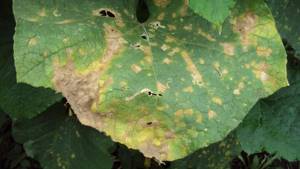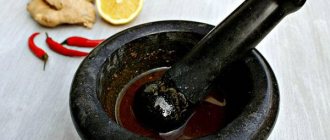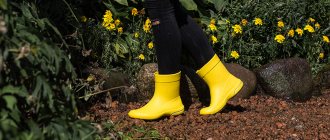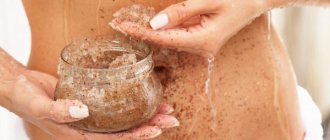Spots due to illness
Most of them are caused by various types of infections. Experts call such spots leaf spots. The causative agents of spotting are most often fungi, less often bacteria and viruses. Pathogenic microorganisms develop inside leaf tissues and cause discoloration and drying out in the form of necrosis of various shapes and colors.
Fungal and bacterial infections persist in plant debris and infected parts of plants - for example, in the bark of shoots, in overwintering leaves (bergenia). Viral - in infected plants, seeds and is transmitted by sucking pests, such as thrips. aphids.
EVERYTHING YOU NEED FOR THIS ARTICLE IS HERE >>>
Some plant varieties and species are resistant to spotting, while others, on the contrary, are highly susceptible. So if you purchase a plant whose leaves are already “stained,” you must be prepared for the fact that such spots will be constantly present. And over time, it is possible for the varieties to be re-infected, and then the spots on each plant will appear in a complex manner.
Related link: Pear rust (orange spots on leaves and growths)
Fungal infection
is present on overwintered leaves, petioles and shoots and appears during the growing season on physiologically old leaves of the lower and middle tiers. Viral and often bacterial manifests itself on young leaves of the upper tier. Spots are often called by the name of the causative fungus - for example, septoria, ascochitoena, pestalocia, etc., and by the color of the spots - black, ocher, white.
Manifestation of spots
we notice from mid-summer to late autumn, but infection of young leaves begins long before this, almost from the beginning of regrowth. Spores from plant debris and from the infected bark of shoots re-infect young budding leaves, a mycelium develops inside the tissues, and as the tissues die, they appear certain spots. Spots on leaves are already dead (necrotic) areas of tissue. Over time, pinpoint fruiting bodies of the overwintering stage of the fungus (pycnidia) form in them.
Moreover, the disease does not just disfigure the appearance of the plant; the stronger it is, the more abundant the premature leaf fall, and, accordingly, the lower the winter hardiness. All biochemical processes take place in the leaves, and without them, young shoots ripen poorly and often freeze.
If spots on different plants have the same name, for example septoria, this does not mean that they are transferring to each other. Yes, septoria
rose spotting is not at all the same as delphinium, cinquefoil, mahonia, spirea, phlox, etc. And the causative fungi will be different, and the symptoms will vary. So, the spots on the leaves of a rose are round, dark brown, lighter in the center, with a dark thin rim. The spots on the shoots are oblong.
In necrosis
punctate pycnidia are formed.
In phlox, septoria spotting manifests itself as small, 1-3 mm, brown, lightening spots that merge into large necrosis.
Phyllostictosis spot
geranium is manifested by large brown spots with a red border, and phyllostictosis, or red-brown, spotting of chestnut leaves is large red-brown or ocher spots of irregular shape without a border.
Ascochyta blotch of hydrangea
– ocher spots, irregular in shape, on the edge of the leaf blade.
Pestalocia spot of rhododendron
- small brown spots of irregular shape with a thin dark border along the edges of the leaf blade. The tissues die, and gray pads of fungal sporulation develop on them. The shoots of young bushes are severely affected. Pestalocia spotting of roses is manifested by brown spots growing towards the middle of the leaf, a yellow stripe is noticeable at the border, and sporulation pads develop. leaves turn yellow prematurely.
Black spot, or marsonina, of roses
- These are many round merging radiant spots and sporulation scabs formed on them. Black spotting, or ritisma, of maple - the spots are first yellowish-green, later black, merging, surrounded by a yellow border. Black bacterial spot of delphinium is caused not by a fungus, but by a bacterium. The spots on the leaves are round, numerous, black-brown, with a convex surface and concentric zoning. On the stems they are depressed and elongated.
Hole spot, or clusterosporiasis
, - numerous spots, reddish, lighter in the center, with a vague border. Necrotic tissue quickly falls out, leaving holes. When shoots are damaged, shallow ulcers with gum form.
Viral spotting
manifested by various spots, streaks, rings, yellowing of the tissue and deformation of leaves and shoots. For example, the rhubarb mosaic virus manifests itself as small spots, irregularly shaped chlorotic zones, and lightening of the veins. This virus does not limit itself to a single crop, but affects many flower and berry crops. White mosaic of gladiolus can be caused by several different viruses and appears as yellow-green spots and stripes that become necrotic and take on a bronze hue.
Gray rot
may also appear as spots. The spots are small, brown, increasing, zonal. In dry weather, the necrotic tissue cracks and falls out, forming holes; with abundant rainfall and autumn, the spots enlarge and become covered with abundant smoky-gray sporulation. Over time, small brown sclerotia form. It affects almost all plants.
Mines and their inhabitants
But there are spots of a completely different type and nature, although they look similar. On the leaves you can often find elongated, round and even snake-shaped spots. They are similar to spots, but the inside is always empty, since these are not necrosis, but mines, and inside the caterpillars of small butterflies - moths - develop and feed on the tissues.
The chestnut moth is widespread on chestnut trees, the lilac moth is widespread on lilacs, and the mines of the hawthorn circle moth are found on many trees and shrubs. Moth butterflies are very small, and their presence can be detected after the fact, precisely by the presence of mines.
Chestnut moth
– a red-brown butterfly that lays eggs on leaves. The caterpillars are yellowish-green, feed inside tissues and produce reddish-brown mines that are round or irregular in shape. The pupae overwinter in a litter of leaves. 2-3 generations develop per year. When there are large numbers, the leaves become completely covered with mines and dry out prematurely.
Hawthorn circle moth
- a small butterfly with narrow wings trimmed with delicate fringe. The caterpillars form round, wide dark mines, in which excrement twisted in the form of a spiral is noticeable.
Lilac moth
lays eggs on leaves. The caterpillars form mines on the upper side of the leaf. Mina is initially light in color, but gradually turns brown and occupies most of the leaf blade. Two generations develop per year; pupae overwinter in mines.
Little thorn moth
- a very small butterfly. The caterpillar forms a mine on the upper side of the leaf. The mine begins in the form of a thin, slightly sinuous passage filled with excrement; later a large brown oval spot with translucent excrement forms.
The cherry slimy sawfly is a shiny black insect with transparent wings. The larva is a greenish-yellow pseudo-caterpillar covered with black mucus. Transparent spots appear on the leaves, on which rather large larvae (9-11 mm) are often visible. The larvae overwinter in the soil, developing two generations per year. Maples also exhibit elongated mines, but they are located on the underside of the leaf and are formed by the caterpillars of the maple leaf miner moth. So far, it is found only sporadically in our country, on planting material imported from the Baltic states. But this moth has been flying there for a long time.
Spots on leaves - protective measures
As you can see, the spots on the leaves are different, and the measures to combat them are always different. Against spots on plants, it is customary to carry out preventive and eradicating treatments with copper-containing preparations: in the spring, early summer and with a strong spread in the fall, especially on roses.
Moth caterpillars feed inside the leaf blade, and it is impossible to get them there. The most effective is collecting and burning leaves with pupae in early spring and preventative spraying of plants with phosphorus-containing preparations in May or early June, during the flight of butterflies and egg laying.
Related link: Brown spots on tomatoes - how to fight?
Light spots on the leaves, as if transparent
Owl: Punctuation punctuation marks.
Punctuation marks include period, comma, colon, ellipsis, exclamation point, and question marks. These punctuation marks are written together with the previous word, after them you need to put spaces.
1. If the topic (main message) turned out to be incorrectly written, then fill in all the punctuation marks in it. Article “Changing the topic (topic), comment and photo.”
2. If we are talking about a comment, then you will not be able to change it now. (You can change your comment only as long as there are no replies to it). In the future, I ask you to immediately format punctuation marks correctly - write the punctuation mark together with the previous word, and put a space after the punctuation mark.
Owl: Punctuation of parentheses.
There are no spaces on the inside (phrases in quotes). For the rest of the sentence (the phrase in quotation marks) is a single word, so it must be separated by spaces from other words. Unless, of course, there is a punctuation mark after (the phrase in quotation marks), which will be written immediately after it.
1. If an incorrectly formed phrase in brackets appears in your topic (main message), then write it correctly. Article “Changing the topic (topic), comment and photo.”
2. If we are talking about a comment, then you will not be able to change it now. (You can change your comment only as long as there are no replies to it). In the future, I ask you to immediately format the phrases in brackets correctly.
Owl: The paragraph is empty.
There are one or more empty paragraphs wedged into your message at the end.
You can easily see an empty paragraph in the text if you press CTRL+A (Latin) at the same time or right-click anywhere on the message text and select “Select All”. This can be done both in text viewing mode and in editing mode.
Once you select the message text, everything will turn translucent blue. Each empty paragraph consists of one space, which will also be highlighted in blue and you will immediately see it.
1. If this is a topic (the first message in a topic), then remove empty paragraphs from the message. Article “Changing the topic (topic), comment and photo.”
2. If we are talking about a comment, then you will not be able to change it now. You can only change your comment as long as there are no replies to it. Then in the future, after publishing a comment, check to see if there are empty paragraphs in it. If you see them, please change your comment immediately. Otherwise, someone’s response to your comment will take away your opportunity to correct the mistake and you will again receive advice from Owl.
Spots on leaves - photo
© Author: L. TREYIVAS, O. KASHTANOVA, phytopathologists of the GBS RAS
ORDER QUALITY AND CHEAP SEEDS AND OTHER GOODS FOR YOUR HOME AND GARDEN. PRICES ARE PRICEY. CHECKED! JUST LOOK FOR YOURSELF AND BE SURPRISED. THERE ARE REVIEWS. GO>>>
Below are other entries on the topic “Do-it-yourself cottage and garden”
- Spots on cucumbers - causes and control (photo): What kind of spots on cucumbers Diseases...
- Brown spots on tomatoes - how to deal with it?: If the tomato leaves turn brown and...
- Strawberry leaves have turned brown - what is it and how to deal with it: If the leaves of garden strawberries “turn brown” Explain...
- Powdery mildew, rust, scab, spotting (photo) - control measures: How to deal with powdery mildew,...
- Black spotting of roses - how to fight: Black spots on roses -...
- Spots on cannas - reasons: Why spots appear on cannas How...
- Are your beet leaves turning red? This is cercosporosis (photo): BEET CERCOSPORASIS - SYMPTOMS AND...
Subscribe to updates in our groups and share.
Causes of rusty spots on cucumber leaves
Cucumbers come from tropical forests with a humid, warm climate. This factor must be taken into account when starting to grow crops in the garden. Violation of the usual growth conditions leads to various problems. One of them is that rusty spots appear on the leaves of cucumbers. There are several reasons for this phenomenon.

Diseases
Why do cucumber leaves have rusty spots? The first reason is fungal diseases such as cladosporiosis, anthracnose, ascochyta blight, and downy mildew.
To determine what disease attacked the plantation, inspect the leaves:
- If the leaves have light brown spots and the lower part is covered with cobweb-like mycelium, then this is cladosporiosis ( olive spot). The disease progresses at high humidity and low air temperatures. Young shoots and fruits are most often affected.
- If depressed brown spots appear on the root collar, the plant has become ill with anthracnose . The disease affects the leaves - smooth red spots appear on them. This disease is sometimes called verdigris. The main reason is water falling on the leaves of the plant during watering or rain.
- Ascochyta blight (black stem rot) is common in greenhouses The stems of cucumbers become covered with large spots, which are initially green. Over time, the spots turn brown and the fruits rot. The ascochyta fungus does not live in the soil; it reproduces only through seed.
- Another disease that affects cucumbers in a greenhouse is corner spot . Plants become covered with oily green spots. Over time, they acquire a rusty tint, holes appear in the leaves, and the fruits become covered with whitish ulcers.
- Another problem is peronosporosis . It is also called downy mildew. Yellow spots appear on the top of the sheets. Gradually they grow, acquiring a rusty tint, and the cucumber tops dry out.
Attention. Fungal diseases actively develop at high humidity and are often transmitted through seed material.
Diseases of cucumbers. ANTHracnose. Fighting methods
Nutrient deficiencies
Rust on cucumbers can be caused by a lack of nutrients, as this leads to a weakened immune system of the plants.
When growing a crop, fertilize according to the following scheme:
- After the fourth leaf appears, apply nitrogen fertilizer. Ammonium nitrate is suitable for this. Dilute 2 tbsp. l. saltpeter in 10 liters of water. Water 0.5 liters per bush.
- The second feeding is carried out after 2 weeks. At this time, the plant gains green mass. Take 0.5 kg of yeast, 1 liter of old jam and dissolve in a bucket of warm water. Place the solution in a warm place for several hours to ferment. To feed, 1 liter of the mixture is diluted in a bucket of water. Water 0.5 liters of fertilizer under each bush.
- During the flowering and fruiting period, they switch to phosphorus-potassium fertilizers, continuing to fertilize every 15 days. You can prepare the mixture in the following proportion: 1 tbsp. l. superphosphate, 2 cups of potassium chloride, 0.5 cups of wood ash. Dilute water in a bucket, water 0.5 liters per bush.
- Organic lovers use humus or compost. You can also use pharmaceutical preparations - brilliant green, hydrogen peroxide. These products not only nourish cucumbers, but also serve as antiseptics, protecting plants from diseases.
Attention. Fertilizers are applied after watering so as not to burn the root system.
Pests
Sometimes red spots on cucumbers are caused by spider mites. This pest appears in hot weather and feeds on the cell sap of the plant.
To help get rid of it:
- weeding beds;
- moistening the beds in hot weather;
- the drug "Fitoverm" for severe damage.
Dry leaves can be caused by melon aphids. It settles on the inside of the leaves, sucking the juice from them. A solution of baking soda, water and laundry soap (1 tablespoon of soda per 1 liter of water) will help fight aphids. Soap is used to help the solution stick.








